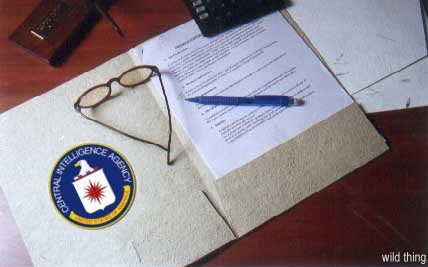
Wild Thing’s comment…..
When Bill Clinton was President he knew of this information. He also knew that if he did nothing about it then the next President would have to deal with it. Because Bill Clinton most certainly favored the enemy of America anyway and did not know what to do about the information below he did nothing.
All of this below built up during the Clinton years as you can see by the dates throughout the report.
I realize it is very long, and I apologize for the length. I found it very interesting and very telling. I am putting the entire thing here in case any of you would also like to read it or have it for a reference.
On Hannity yesterday, General Tommy Franks said the democrats “kicked the can along” instead of doing anything substantive. Hence we wound up with Al Qaeda, Saddam, Iran and North Korea.
Unclassified Report to Congress on the Acquisition of Technology
Relating to Weapons of Mass Destruction and Advanced Conventional Munitions,
1 July Through 31 December 2000
CIA.gov report
Report to Congress on the Acquisition of Technology Relating to Weapons of Mass Destruction and Advanced Conventional Munitions, 1 July Through 31 December 2000
The Director of Central Intelligence (DCI) hereby submits this report in response to a Congressionally directed action in Section 721 of the FY 97 Intelligence Authorization Act, which requires:
“(a) Not later than 6 months after the date of the enactment of this Act, and every 6 months thereafter, the Director of Central Intelligence shall submit to Congress a report on
(1) the acquisition by foreign countries during the preceding 6 months of dual-use and other technology useful for the development or production of weapons of mass destruction (including nuclear weapons, chemical weapons, and biological weapons) and advanced conventional munitions; and
(2) trends in the acquisition of such technology by such countries.”
At the DCI’s request, the DCI Weapons Intelligence, Nonproliferation, and Arms Control Center (WINPAC) drafted this report and coordinated it throughout the Intelligence Community. As directed by Section 721, subsection (b) of the Act, it is unclassified. As such, the report does not present the details of the Intelligence Community’s assessments of weapons of mass destruction and advanced conventional munitions programs that are available in other classified reports and briefings for the Congress.
Acquisition by Country:
As required by Section 721 of the FY 97 Intelligence Authorization Act, the following are summaries by country of acquisition activities (solicitations, negotiations, contracts, and deliveries) related to weapons of mass destruction (WMD) and advanced conventional weapons (ACW) that occurred from 1 July through 31 December 2000. We excluded countries that already have substantial WMD programs, such as China and Russia, as well as countries that demonstrated little WMD acquisition activity of concern.
IRAN
Iran remains one of the most active countries seeking to acquire WMD and ACW technology from abroad. In doing so, Tehran is attempting to develop a domestic capability to produce various types of weapons—chemical, biological, and nuclear—and their delivery systems. During the reporting period, the evidence indicates determined Iranian efforts to acquire WMD- and ACW-related equipment, materials, and technology focused primarily on entities in Russia, China, North Korea, and Western Europe.
Iran, a Chemical Weapons Convention (CWC) States party, already has manufactured and stockpiled chemical weapons — including blister, blood, choking, and probably nerve agents, and the bombs and artillery shells for delivering them. During the second half of 2000, Tehran continued to seek production technology, training, expertise, equipment, and chemicals that could be used as precursor agents in its chemical warfare (CW) program from entities in Russia and China.
Tehran continued its efforts to seek considerable dual-use biotechnical materials, equipment, and expertise from abroad—primarily from entities in Russia and Western Europe—ostensibly for civilian uses. We judge that this equipment and know-how could be applied to Iran’s biological warfare (BW) program. Iran probably began its offensive BW program during the Iran-Iraq war, and it may have some limited capability for BW deployment.
Iran sought nuclear-related equipment, material, and technical expertise from a variety of sources, especially in Russia. Work continues on the construction of a 1,000-megawatt nuclear power reactor at Bushehr that will be subject to International Atomic Energy Agency (IAEA) safeguards. In addition, Russian entities continued to interact with Iranian research centers on various activities. These projects will help Iran augment its nuclear technology infrastructure, which in turn would be useful in supporting nuclear weapons research and development. The expertise and technology gained, along with the commercial channels and contacts established—particularly through the Bushehr nuclear power plant project—could be used to advance Iran’s nuclear weapons research and development program.
Beginning in January 1998, the Russian Government took a number of steps to increase its oversight of entities involved in dealings with Iran and other states of proliferation concern. In 1999, it pushed a new export control law through the Duma. Russian firms, however, faced economic pressures to circumvent these controls and did so in some cases. The Russian Government, moreover, failed to enforce its export controls in some cases regarding Iran. A component of the Russian Ministry of Atomic Energy (MINATOM) contracted with Iran to provide equipment clearly intended for Atomic Vapor Laser Isotope Separation (AVLIS). The laser equipment was to have been delivered in late 2000 but continues to be held up as a result of US protests. AVLIS technology could provide Iran the means to produce weapons quantities of highly enriched uranium.
China pledged in October 1997 to halt cooperation on a uranium conversion facility (UCF) and not to engage in any new nuclear cooperation with Iran but said it would complete cooperation on two nuclear projects: a small research reactor and a zirconium production facility at Esfahan that Iran will use to produce cladding for reactor fuel. As a party to the Nuclear Nonproliferation Treaty (NPT), Iran is required to apply IAEA safeguards to nuclear fuel, but safeguards are not required for the zirconium plant or its products.
Iran has attempted to use its civilian energy program, which is quite modest in scope, to justify its efforts to establish domestically or otherwise acquire assorted nuclear fuel-cycle capabilities. But such capabilities can also support fissile material production for a weapons program, and we believe it is this objective that drives Iran’s efforts to acquire relevant facilities. For example, Iran has sought to obtain turnkey facilities, such as the UCF, that ostensibly would be used to support fuel production for the Bushehr power plant. But the UCF could be used in any number of ways to support fissile material production needed for a nuclear weapon—specifically, production of uranium hexafluoride for use as a feedstock for uranium enrichment operations and production of uranium compounds suitable for use as fuel in a plutonium production reactor. In addition, we suspect that Tehran most likely is interested in acquiring foreign fissile material and technology for weapons development as part of its overall nuclear weapons program.
During the second half of 2000, entities in Russia, North Korea, and China continued to supply crucial ballistic missile–related equipment, technology, and expertise to Iran. Tehran is using assistance from foreign suppliers and entities to support current development and production programs and to achieve its goal of becoming self-sufficient in the production of ballistic missiles. Iran already is producing Scud short-range ballistic missiles (SRBMs) and is in the late stages of developing the Shahab-3 medium-range ballistic missile (MRBM). Iran has built and publicly displayed prototypes for the Shahab-3 and has tested the Shahab-3 three times—July 1998, July 2000, and September 2000. In addition, Iran has publicly acknowledged the development of a Shahab-4, originally calling it a more capable ballistic missile than the Shahab-3 but later categorizing it as solely a space launch vehicle with no military applications. Iran’s Defense Minister also has publicly mentioned plans for a “Shahab-5”. Such statements, made against the backdrop of sustained cooperation with Russian, North Korean, and Chinese entities, strongly suggest that Tehran intends to develop a longer-range ballistic missile capability.
Iran continues to seek and acquire conventional weapons and production technologies primarily from Russia and China. Following Russia’s public abrogation of the 1995 Gore-Chernomyrdin Agreement in November 2000, Iran has expressed interest in acquiring a variety of Russian air, naval and ground weapons. Russia has continued to deliver on contracts signed prior to the 1995 agreement. During the second half of 2000, Iran continued to negotiate for and receive Mi-171 helicopters form Russia. Naval acquisitions from a variety of countries continue. Tehran also has been able to keep operational at least part of its existing fleet of Western-origin aircraft and helicopters supplied before the 1979 Iranian Revolution and continues to develop limited capabilities to produce armor, artillery, tactical missiles, munitions, and aircraft with foreign assistance.
IRAQ
Since Operation Desert Fox in December 1998, Baghdad has refused to allow United Nations inspectors into Iraq as required by Security Council Resolution 687. In spite of ongoing UN efforts to establish a follow-on inspection regime comprising the UN Monitoring, Verification, and Inspection Commission (UNMOVIC) and the IAEA’s Iraq Action Team, no UN inspections occurred during this reporting period. Moreover, the automated video monitoring system installed by the UN at known and suspect WMD facilities in Iraq is no longer operating. Having lost this on-the-ground access, it is more difficult for the UN or the US to accurately assess the current state of Iraq’s WMD programs.
Given Iraq’s past behavior, it is likely that Iraq has used the period since Desert Fox to reconstitute prohibited programs. We assess that since the suspension of UN inspections in December of 1998, Baghdad has had the capability to reinitiate both its CW and BW programs within a few weeks to months. Without an inspection-monitoring program, however, it is more difficult to determine if Iraq has done so.
Since the Gulf war, Iraq has rebuilt key portions of its chemical production infrastructure for industrial and commercial use, as well as its missile production facilities. It has attempted to purchase numerous dual-use items for, or under the guise of, legitimate civilian use. This equipment—in principle subject to UN scrutiny—also could be diverted for WMD purposes. Since the suspension of UN inspections in December 1998, the risk of diversion has increased. After Desert Fox, Baghdad again instituted a reconstruction effort on those facilities destroyed by the US bombing, including several critical missile production complexes and former dual-use CW production facilities. In addition, Iraq appears to be installing or repairing dual-use equipment at CW-related facilities. Some of these facilities could be converted fairly quickly for production of CW agents.
UNSCOM reported to the Security Council in December 1998 that Iraq also continued to withhold information related to its CW program. For example, Baghdad seized from UNSCOM inspectors an Air Force document discovered by UNSCOM that indicated that Iraq had not consumed as many CW munitions during the Iran-Iraq war in the 1980s as had been declared by Baghdad. This discrepancy indicates that Iraq may have hidden an additional 6,000 CW munitions.
In 1995, Iraq admitted to having an offensive BW program and submitted the first in a series of Full, Final, and Complete Disclosures (FFCDs) that were supposed to reveal the full scope of its BW program. According to UNSCOM, these disclosures are incomplete and filled with inaccuracies. Since the full scope and nature of Iraq’s BW program was not verified, UNSCOM had assessed that Iraq continued to maintain a knowledge base and industrial infrastructure that could be used to produce quickly a large amount of BW agents at any time, if the decision is made to do so. In the absence of UNSCOM or other inspections and monitoring since late 1998, we remain concerned that Iraq may again be producing biological warfare agents.
Iraq has continued working on its L-29 unmanned aerial vehicle (UAV) program, which involves converting L-29 jet trainer aircraft originally acquired from Eastern Europe. It is believed that Iraq has conducted flights of the L-29, possibly to test system improvements or to train new pilots. These refurbished trainer aircraft are believed to have been modified for delivery of chemical or, more likely, biological warfare agents.
We believe that Iraq has probably continued low-level theoretical R&D associated with its nuclear program. A sufficient source of fissile material remains Iraq’s most significant obstacle to being able to produce a nuclear weapon. Although we were already concerned about a reconstituted nuclear weapons program, our concerns were increased last September when Saddam publicly exhorted his “Nuclear Mujahidin” to “defeat the enemy.”
Iraq continues to pursue development of SRBM systems that are not prohibited by the United Nations and may be expanding to longer-range systems. Pursuit of UN-permitted missiles continues to allow Baghdad to develop technological improvements and infrastructure that could be applied to a longer-range missile program. We believe that development of the liquid-propellant Al-Samoud SRBM probably is maturing and that a low-level operational capability could be achieved in the near term — which is further suggested by the appearance of four Al Samoud transporter-erector-launchers (TELs) with airframes at the 31 December Al Aqsa Cal parade. The solid-propellant missile development program may now be receiving a higher priority, and development of the Ababil-100 SRBM – two of such airframes and TELs were paraded on 31 December—and possibly longer range systems may be moving ahead rapidly. If economic sanctions against Iraq were lifted, Baghdad probably would increase its attempts to acquire missile-related items from foreign sources, regardless of any future UN monitoring and continuing restrictions on long-range ballistic missile programs. Iraq probably retains a small, covert force of Scud-type missiles.
Iraq’s ACW acquisitions remain low due to the generally successful enforcement of the UN arms embargo. The weapons and ACW-related goods which have been delivered to Iraq tend to be smaller arms transported over porous land borders. Iraq continues, however, to aggressively seek ACW equipment and technology.
NORTH KOREA
During this time frame, North Korea continued procurement of raw materials and components for its ballistic missile programs from various foreign sources, especially through North Korean firms based in China. We assess that North Korea is capable of producing and delivering via munitions a wide variety of chemical and biological agents.
During the remainder of 2000, P’yongyang continued its attempts to procure technology worldwide that could have applications in its nuclear program, but we do not know of any procurement directly linked to the nuclear weapons program. We assess that North Korea has produced enough plutonium for at least one, and possibly two, nuclear weapons. The United States and North Korea completed the canning of all accessible spent fuel rods and rod fragments in April 2000 in accordance with the 1994 Agreed Framework. That reactor fuel contains enough plutonium for several more weapons.
LYBIA
Libya is continuing its efforts to obtain ballistic missile–related equipment, materials, technology, and expertise from foreign sources. Outside assistance—particularly Serbian, Indian, North Korean and Chinese—is critical to it ballistic missile development programs, and the suspension of UN sanctions in 1999 has allowed Tripoli to expand its procurement effort. Libya’s current capability probably remains limited to its Scud B missiles, but with continued foreign assistance it may achieve an MRBM capability—a long-desired goal—or extended-range Scud capability.
Libya remains heavily dependent on foreign suppliers for precursor chemicals and other key CW-related equipment. Following the suspension of UN sanctions in April 1999, Tripoli reestablished contacts with sources of expertise, parts, and precursor chemicals abroad, primarily in Western Europe. Libya still appears to have a goal of establishing an offensive CW capability and an indigenous production capability for weapons. Evidence suggests Libya also is seeking to acquire the capability to develop and produce BW agents.
Libya—an NPT party with full scope IAEA safeguards—continues to develop its nuclear research and development program but would still require significant foreign assistance to advance a nuclear weapons option. The suspension of UN sanctions has accelerated the pace of procurement efforts in Libya’s drive to rejuvenate its ostensibly civilian nuclear program. In January and November 2000, for example, Tripoli and Moscow renewed talks on cooperation at the Tajura Nuclear Research Center and discussed a potential power reactor deal. Should such civil-sector work come to fruition, Libya could gain opportunities to pursue technologies that could be diverted for military purposes.
Following the suspension of UN sanctions, Libya has negotiated—and perhaps completed—contracts with Russian firms for conventional weapons, munitions, and upgrades and refurbishment for its existing inventory of Soviet-era weapons.
SYRIA
Syria sought CW-related precursors and expertise from foreign sources during the reporting period. Damascus already has a stockpile of the nerve agent sarin, and it would appear that Syria is trying to develop more toxic and persistent nerve agents. Syria remains dependent on foreign sources for key elements of its CW program, including precursor chemicals and key production equipment. It is highly probable that Syria also is developing an offensive BW capability.
We will continue to monitor the potential for Syria’s nuclear R&D program to expand.
During the second half of 2000, Damascus continued work on establishing a solid-propellant rocket motor development and production capability with help from outside countries. Foreign equipment and assistance to its liquid-propellant missile program—primarily from North Korean entities, but also from firms in Russia—have been and will continue to be essential for Syria’s effort. Damascus also continued its efforts to assemble—probably with considerable North Korean assistance—liquid-fueled Scud C missiles.
Syria continues to acquire ACW—mainly from Russia and other FSU suppliers—although at a reduced level from the early 1990s. During the past few years, Syria has received Kornet-E (AT-14), Metis-M (AT-13), Konkurs (AT-5), and Bastion-M (AT-10B) antitank guided missiles, RPG-29 rocket launchers, and small arms. Damascus has expressed interest in acquiring Russian Su-27 and MiG-29 fighters and air defense systems, but its outstanding debt to Moscow and inability to fund large purchases have hampered negotiations.
SUDAN
In the WMD arena, Sudan, a CWC States Party, has been developing the capability to produce chemical weapons for many years. In this pursuit, it historically has obtained help from entities in other countries, principally Iraq. Sudan may be interested in a BW program as well.
During the reporting period, Sudan sought to acquire a variety of military equipment from various sources. Khartoum is seeking older, less expensive ACW and conventional weapons that nonetheless are advanced compared with the capabilities of the weapons possessed by its opponents and their supporters in neighboring countries in the long-running civil war.
INDIA
India continues its nuclear weapons development program, for which its underground nuclear tests in May 1998 were a significant milestone. The acquisition of foreign equipment will benefit New Delhi in its efforts to develop and produce more sophisticated nuclear weapons. During this reporting period, India continued to obtain foreign assistance for its civilian nuclear power program, primarily from Russia.
India continues to rely on foreign assistance for key missile technologies, where it still lacks engineering or production expertise. Entities in Russia and Western Europe remained the primary conduits of missile-related and dual-use technology transfers during the latter half of 2000.
India continues an across-the-board modernization of its armed forces through ACW acquisitions, mostly from Russia, although many of its key programs have been plagued by delays. During the reporting period, New Delhi concluded a $3 billion contract with Russia to produce under license 140 Su-30 multirole fighters and continued negotiations with Moscow for 310 T-90S main battle tanks, A-50 Airborne Early Warning and Control (AWACS) aircraft, Tu-22M Backfire maritime strike bombers, and an aircraft carrier. India also continues to explore options for leasing or purchasing several AWACS systems from other entities. India also signed a contract with France for 10 additional Mirage 2000H multirole fighters and is considering offers for jet trainer aircraft from France and the United Kingdom. In addition to helping India with the development of its indigenous nuclear-powered submarine, Russia is negotiating with India the possible lease of a Russian nuclear-powered attack submarine.
PAKISTAN
Chinese entities continued to provide significant assistance to Pakistan’s ballistic missile program during the reporting period. With Chinese assistance, Pakistan is moving toward serial production of solid-propellant SRBMs, such as the Shaheen-I and Haider-I. Pakistan flight-tested the Shaheen-I in 1999 and plans to flight-test the Haider-I in 2001. Successful development of the two-stage Shaheen-II MRBM will require continued Chinese assistance or assistance from other potential sources.
Pakistan continued to acquire nuclear-related and dual-use equipment and materials from various sources—principally in Western Europe. Islamabad has a well-developed nuclear weapons program, as evidenced by its first nuclear weapons tests in late May 1998. Acquisition of nuclear-related goods from foreign sources will remain important if Pakistan chooses to develop more advanced nuclear weapons. China, which has provided extensive support in the past to Islamabad’s nuclear weapons and ballistic missile programs, in May 1996 pledged that it would not provide assistance to unsafeguarded nuclear facilities in any state, including Pakistan. We cannot rule out, however, some unspecified contacts between Chinese entities and entities involved in Pakistan’s nuclear weapons development.
Pakistan continues to rely on China and France for its ACW requirements and negotiated to purchase an additional 40 F-7 fighters from China.
EGYPT
During the last half of 2000, Egypt maintained a relationship with North Korea on ballistic missiles and maintained a Scud inventory. Egypt’s ACW acquisition trends aim toward modernizing its Soviet-era equipment and acquiring newer, mostly US weapons.
KEY SUPPLIERS
RUSSIA
Despite improvements in Russia’s economy, the state-run defense and nuclear industries remain strapped for funds, even as Moscow looks to them for badly needed foreign exchange through exports. We remain very concerned about the proliferation implications of such sales in several areas. Monitoring Russian proliferation behavior, therefore, will remain a very high priority.
Russian entities during the reporting period continued to supply a variety of ballistic missile-related goods and technical know-how to countries such as Iran, India, China, and Libya. Iran’s earlier success in gaining technology and materials from Russian entities has helped to accelerate Iranian development of the Shahab-3 MRBM, and continuing Russian assistance likely supports Iranian efforts to develop new missiles and increase Tehran’s self-sufficiency in missile production.
Russia also remained a key supplier for civilian nuclear programs in Iran, primarily focused on the Bushehr Nuclear Power Plant project. With respect to Iran’s nuclear infrastructure, Russian assistance enhances Iran’s ability to support a nuclear weapons development effort, even though the ostensible purpose of most of this assistance is for civilian applications. Despite Iran’s NPT status, the United States is convinced Tehran is pursuing a nuclear weapons program. The Intelligence Community will be closely monitoring Tehran’s nuclear cooperation with Moscow for any direct assistance in support of a nuclear weapons program.
In January 2000, Moscow approved a draft cooperative program with Syria that included civil use of nuclear power. Broader access to Russian scientists and Russia’s large nuclear infrastructure could provide opportunities to solicit fissile material production expertise and other nuclear-related assistance if Syria decided to pursue nuclear weapons. In addition, Russia supplied India with material for its civilian nuclear program during this reporting period.
President Putin in May 2000 amended the presidential decree on nuclear exports to allow the export in exceptional cases of nuclear materials, technology, and equipment to countries that do not have full-scope IAEA safeguards. The move could clear the way for expanding nuclear exports to certain countries that do not have full-scope safeguards, such as India.
During the second half of 2000, Russian entities remained a significant source of dual-use biotechnology, chemicals, production technology, and equipment for Iran. Russia’s biological and chemical expertise makes it an attractive target for Iranians seeking technical information and training on BW and CW agent production processes.
Russia continues to be a major supplier of conventional arms. It is the primary source of ACW for China and India, it continues to supply ACW to Iran and Syria, and it has negotiated new contracts with Libya and North Korea.
Russia continues to be the main supplier of technology and equipment to India and China’s naval nuclear propulsion programs. In addition, Russia has discussed leasing nuclear-powered attack submarines to India.
The Russian Government’s commitment, willingness, and ability to curb proliferation-related transfers remain uncertain. The export control bureaucracy was reorganized again as part of President Putin’s broader government reorganization in May 2000. The Federal Service for Currency and Export Controls (VEK) was abolished and its functions assumed by a new department in the Ministry of Economic Development and Trade. VEK had been tasked with drafting the implementing decrees for Russia’s July 1999 export control law; the status of these decrees is not known. Export enforcement continues to need improvement. In February 2000, Sergey Ivanov, then Secretary of Russia’s Security Council, said that during 1998-99 the government had obtained convictions for unauthorized technology transfers in three cases. The Russian press has reported on cases where advanced equipment is simply described as something else in the export documentation and is exported. Enterprises sometimes falsely declare goods to avoid government taxes.
NORTH KOREA
Throughout the second half of 2000, North Korea continued to export significant ballistic missile–related equipment, components, materials, and technical expertise to countries in the Middle East, South Asia, and North Africa. P’yongyang attaches a high priority to the development and sale of ballistic missiles, equipment, and related technology. Exports of ballistic missiles and related technology are one of the North’s major sources of hard currency, which fuel continued missile development and production.
CHINA
During this reporting period, Beijing continued to take a very narrow interpretation of its bilateral nonproliferation commitments with the United States. In the case of missile-related transfers, Beijing has on several occasions pledged not to sell Missile Technology Control Regime (MTCR) Category I systems but has not recognized the regime’s key technology annex. China is not a member of the MTCR.
In November 2000, China committed not to assist, in any way, any country in the development of ballistic missiles that can be used to deliver nuclear weapons, and to enact at an early date a comprehensive missile-related export control system.
During the reporting period, Chinese entities provided Pakistan with missile-related technical assistance. Pakistan has been moving toward domestic serial production of solid-propellant SRBMs with Chinese help. Pakistan also needs continued Chinese assistance to support development of the two-stage Shaheen-II MRBM. In addition, firms in China have provided dual-use missile-related items, raw materials, and/or assistance to several other countries of proliferation concern—such as Iran, North Korea, and Libya.
In the nuclear area, China has made bilateral pledges to the United States that go beyond its 1992 NPT commitment not to assist any country in the acquisition or development of nuclear weapons. For example, in May 1996 Beijing pledged that it would not provide assistance to unsafeguarded nuclear facilities.
With respect to Pakistan, Chinese entities in the past provided extensive support to unsafeguarded as well as safeguarded nuclear facilities, which enhanced substantially Pakistan’s nuclear weapons capability. We cannot rule out some continued contacts between Chinese entities and entities associated with Pakistan’s nuclear weapons program subsequent to Beijing’s 1996 pledge and during this reporting period.
In October 1997, China gave the United States assurances regarding its nuclear cooperation with Iran. China agreed to end cooperation with Iran on supply of a uranium conversion facility and undertake no new cooperation with Iran after completion of two existing projects—a zero-power reactor and a zirconium production plant. Although the Chinese appear to have lived up to these commitments, we are aware of some interactions between Chinese and Iranian entities that have raised questions about its “no new nuclear cooperation” pledge. According to the State Department, the Administration is seeking to address these questions with appropriate Chinese authorities.
Prior to the reporting period, Chinese firms had supplied dual-use CW-related production equipment and technology to Iran. The US sanctions imposed in May 1997 on seven Chinese entities for knowingly and materially contributing to Iran’s CW program remain in effect. Evidence during the current reporting period shows Iran continues to seek such assistance from Chinese entities, but it is unclear to what extent these efforts have succeeded.
China is a primary supplier of advanced conventional weapons to Pakistan, Iran, and Sudan, among others. Sudan received military vehicles, naval equipment, guns, ammunition, and tanks from Chinese suppliers in the latter half of 2000.
WESTERN COUNTRIES
As was the case in 1998 and 1999, entities in Western countries in 2000 were not as important as sources for WMD- and missile- related goods and materials as in past years. However, Iran and Libya continued to approach entities in Western Europe to provide needed acquisitions for their WMD and missile programs. Increasingly rigorous and effective export controls and cooperation among supplier countries have led the other foreign WMD and missile programs to look elsewhere for many controlled dual-use goods. Machine tools, spare parts for dual-use equipment, and widely available materials, scientific equipment, and specialty metals were the most common items sought. In addition, several Western countries announced their willingness to negotiate ACW sales to Libya.
TRENDS
As in previous reports, countries determined to maintain WMD and missile programs over the long term have been placing significant emphasis on increased self-sufficiency and attempts to insulate their programs against interdiction and disruption, as well as trying to reduce their dependence on imports by developing domestic production capabilities. Although these capabilities may not always be a good substitute for foreign imports—particularly for more advanced technologies—in many cases they may prove to be adequate. In addition, as their domestic capabilities grow, traditional recipients of WMD and missile technology could emerge as new suppliers of technology and expertise. Many of these countries—such as India, Iran and Pakistan—are not members of supplier groups such as the Nuclear Suppliers Group, Australia Group and the Missile Technology Control Regime and do not adhere to their export constraints. In addition, private companies, scientists, and engineers in Russia, China, and India may be increasing their involvement in WMD- and missile-related assistance, taking advantage of weak or unenforceable national export controls and the growing availability of technology.
Some countries of proliferation concern are continuing efforts to develop indigenous designs for advanced conventional weapons and expand production capabilities, although most of these programs usually rely heavily on foreign technical assistance. Many of these countries—unable to obtain newer or more advanced arms—are pursuing upgrade programs for existing inventories.


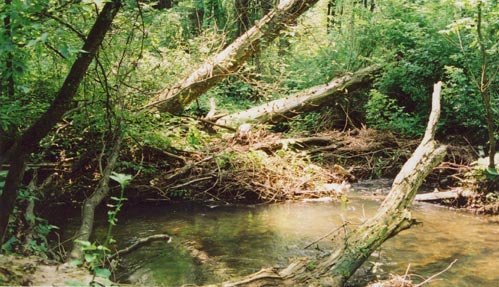




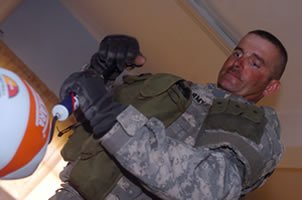
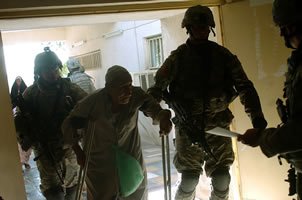
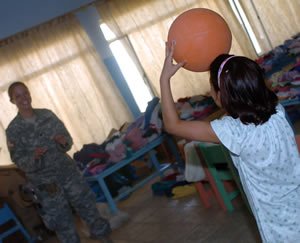


Recent Comments